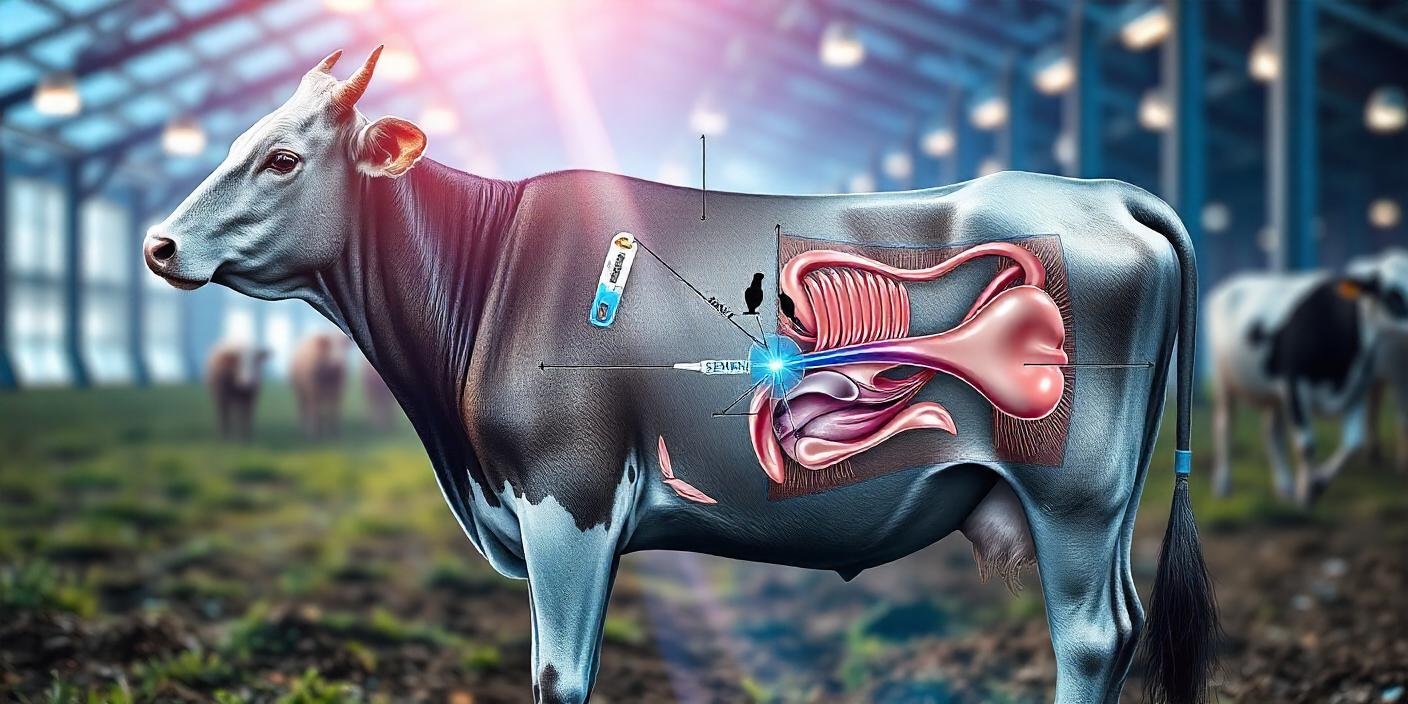Explore the importance and benefits of artificial insemination in animals, a technique revolutionizing livestock breeding by improving genetics and ensuring food security.
Before delving into artificial insemination in animals, it’s important to define insemination. Insemination refers to the introduction of male sperm into the female reproductive system to enable fertilization and pregnancy. In mammals, this usually occurs through natural mating, but in some cases, artificial methods are employed. These methods fall under the umbrella of artificial insemination in animals, where semen is strategically placed in the female reproductive tract to achieve successful fertilization.
Artificial insemination in animals has become a cornerstone of modern breeding techniques, particularly in livestock. The process closely mimics natural reproduction but offers several advantages, such as disease control, enhanced genetic diversity, and increased fertility rates. The same pregnancy process follows successful fertilization, regardless of whether it occurs naturally or through artificial insemination.
History of Artificial Insemination in Animals:
The origins of artificial insemination in animals can be traced back to 1322 A.D. when the first known instance occurred with a stolen semen sample used to impregnate a mare. However, it wasn’t until 1780 that Italian physiologist L. Spallanzani successfully employed this technique on a dog, revolutionizing animal breeding. By 1940, artificial insemination in animal shad gained traction in the United States, particularly in the dairy industry, where it continues to be a critical tool for improving cattle breeds.
Importance and Benefits:
Artificial insemination in animals provides an exceptional opportunity to propagate superior genetics, producing healthier and more productive offspring. Through this technique, up to 50,000 animals can be bred in a single year, compared to just 40-50 using natural methods. It’s also a key strategy for controlling diseases that are transmitted through natural mating, ensuring the health and productivity of livestock.
In addition to promoting genetic diversity, artificial insemination in animals is more cost-effective and safer, especially when breeding animals of significantly different sizes. It allows the synchronized insemination of multiple females, helping to maintain farm homogeneity. In cases of female animals that are in heat but refuse to mate naturally, this insemination is an invaluable tool. Combined with biotechnology, artificial insemination addresses global food security by enabling the production of healthy meat and milk.
Process of Artificial Insemination in Animals:
The process begins by identifying a female in heat, followed by selecting the optimal time for insemination. An AI gun or catheter is used to insert semen directly into the uterus, ensuring minimal semen loss. The procedure requires precision, proper tools, and expert handling to avoid infections and maximize success rates.
Effectiveness of Artificial Insemination:
The success rate of artificial insemination in animals depends on the technique employed. For instance, intrauterine insemination has a 60% success rate, as demonstrated by a study in Pakistan where 89 out of 150 dairy cows successfully became pregnant. Conversely, intra-cervical insemination has a lower success rate of around 20%. Proper handling of semen, expert inseminators, and the presence of male bulls for heat detection all contribute to improved breeding efficiency.
Pricing of Artificial Insemination:
Compared to natural mating, artificial insemination in animals can be more expensive upfront, but the long-term benefits, such as increased milk production in AI-bred daughters (up to 25% more), offset the cost. Factors influencing the price include semen quality, breed, milk production, feed costs, and timing.
Requirements for Artificial Insemination:
Successful artificial insemination in animals requires thawed, viable semen and sterilized tools. The semen must be maintained at an optimal temperature to ensure sperm viability. All equipment, including thermometers, must be regularly checked and maintained to avoid errors that could affect fertility rates.
Types of Artificial Insemination in Animals:
There are four main types of artificial insemination in animals:
- Intrauterine insemination (IUI): Semen is placed directly into the uterus, with a 60% success rate.
- Intracervical insemination (ICI): Sperm is deposited into the cervix, with a 20% success rate.
- Intratubal insemination (ITI): Semen is placed in the fallopian tubes, with a 10-15% success rate.
- Intravaginal insemination (IVI): Used when natural sperm transport is compromised; fertilization occurs outside the body, and the zygote is implanted in the womb.
Collection of Sperm for Artificial Insemination:
Semen collection methods include electron-ejaculation, massage, dummy cow collection, and live mounting. Artificial vaginas, properly prepared for temperature and lubrication, are the most commonly used method. Collected semen is diluted with specific liquids for preservation and stored at either 5°C or in liquid nitrogen.
Equipment Used in Artificial Insemination:
- 2 ml syringe (1 mm diameter)
- Sterilized pipette
- AI gun
- Semen tank
- Straw cutter
- Sheath and sleeve
- Thermos for semen storage
Conclusion:
Artificial insemination in animals is a revolutionary technique with far-reaching implications for livestock genetics, productivity, and global food security. Properly executed, it allows for the breeding of healthier animals and the propagation of desirable traits. The technique not only improves breeding efficiency but also addresses the challenges of food demand by ensuring a steady supply of meat and milk, making it essential for sustainable agricultural practices.
